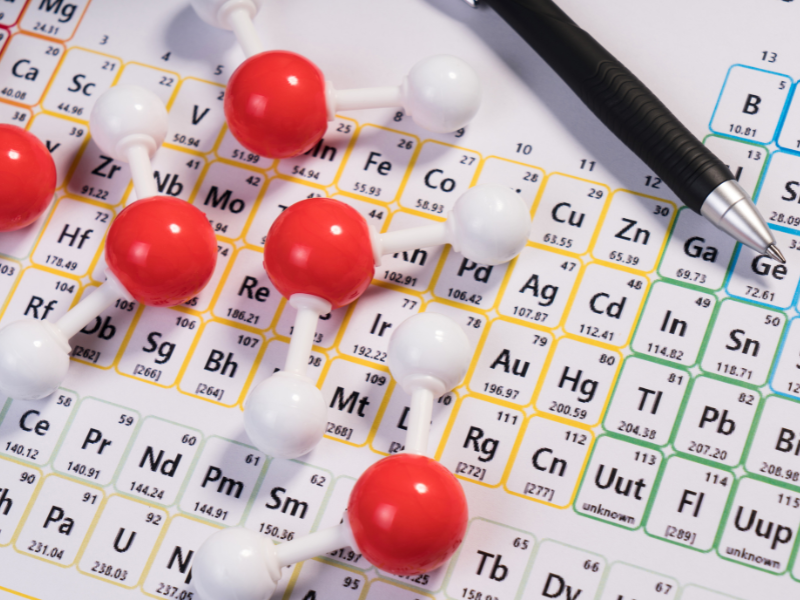What are Enzymes?
Enzymes are proteins that function as biological catalysts. A catalyst is a substance that increases the rate of a chemical reaction and is not changed by the reaction. These enzymes are made in living cells and thus are known as biological. From this information, we can state that:
Enzymes are made in the body to speed up reactions that take place in the body without getting changed or used up.
As enzymes are made up of proteins, they will need amino acids as building blocks for them.
Almost all metabolic processes (catabolic – breaking down, and anabolic – building up processes) require enzymes.
Enzymes and Metabolism
Metabolism is the sum of all catabolic and anabolic processes that take place in a living body.
| Catabolic | Anabolic |
| Enzymes break complex substrates to simple products | Enzymes synthesize complex products from simple substrates |
| These reactions break down and release energy (exothermic) | These reactions build up and use energy (endothermic) |
| Respiration is an example: breaks down a complex sugar (glucose) into simpler compounds and releases energy | Photosynthesis is an example: takes in energy from sunlight and produces a complex sugar (glucose) |
The production of enzymes will be anabolic as they are built from amino acids in cells.
Where are Enzymes Produced?
All enzymes are produced within cells. Most are intracellular: work within the cell but some are extracellular: released from cells and work outside these cells (example: digestive enzymes such as lipase).
Enzyme Action
Each enzyme is specific to a substrate (protease is specific to proteins).
An enzyme is a 3D protein molecule with an active site which allows the enzyme to act as a catalyst. The active site is the point at which a substrate attaches to an enzyme.
The substrate (molecule on which the enzyme acts upon) is the key to a lock (the enzyme). The whole idea of the lock and key mechanism is known as the lock and key hypothesis derived by the German scientist Emil Fischer.
In the presence of the enzyme, the substrate attaches to the enzyme and will either break (catabolic) or build up (anabolic) into products. There may be multiple substrates or products or even 1 of each. The product will separate from the enzyme. If 2 products are formed (such as fatty acids and glycerol broken down from fats by lipase) the products will also separate from each other.

Enzymes are specific to one particular substrate as the enzyme is a complementary shape to the substrate.
When the substrate moves into the enzyme’s active site, they become known as the enzyme-substrate complex. After the reaction has occurred, the products leave the enzyme’s active site as they no longer fit it and it is free to take up another substrate.

Enzymes are specific due to the shape of its active site. After the reaction takes place, the enzymes remain unchanged as they are catalysts.
The diagram below shows the action of both anabolic and catabolic enzyme action:

Note that anabolic reactions are also known as synthesis (condensation) reactions and catabolic reactions may be known as hydrolysis if water is involved in the breakdown.

Summary of Enzyme Action:
- Enzymes and substates randomly move about in solution
- When an enzyme and its complementary substrate randomly collide – with the substrate fitting into the active site of the enzyme – an enzyme-substrate complex forms, and the reaction occurs.
- A product forms from the substrate which is then released from the active site. The enzyme is unchanged and will go on to catalyse further reactions.
Factors Affecting Enzyme Activity
Temperature:
- When the temperature is lower than the optimum (ideal) temperature, fewer collisions of enzymes and substrates occur as there is lesser energy in the molecules.
- As the temperature increases, substrate molecules move faster and collide with greater energy, making it more likely for binding at the active site.
- The optimum temperature is where enzymes work best as most collisions are successful.
- At high temperatures, there is more energy, but the active site starts to deform due to vibrations, so fewer collisions take place (losing ability to bind). This is called the denaturing of enzymes.
The optimum temperature for enzymes to work in:
- Humans: 35 to 40°C – below this, works slow; above this, denaturing takes place.
- Plants: 25 to 30°C – below this, works slow; above this, denaturing takes place.
This can be plotted on a graph:

Power of Hydrogen (pH):

The above scale is known as the pH Scale. It shows the levels of acidity or how alkaline a substance is. Most enzymes work best around neutral (6.5 to 8) pH, though there are some which need acidic or slightly alkaline conditions. Hydrochloric acid is produced in the stomach for the enzyme pepsin (a protease) to work at optimum ph. This acid will pass through the intestine, thus hydrogen carbonates (alkaline) are produced in the pancreas and passed on to make sure the pH in the intestine is neutralized and to give amylase and lipases its ideal pH.
When it comes to pH, enzymes only work at its optimum pH and will be denatured below or above optimum as the active sites shape gets changed and then fewer collisions take place.

Note that the pH of the enzyme is not 2 (pepsin) or 7.5 (amylase), but it is the best pH it works at.

Activators and Inhibitors:
These are molecules that affect how an enzyme binds to a substrate:
- Activators or coenzymes make binding of enzymes more likely (Chlorine ions are present and needed along with salivary amylase).
- Inhibitors make it harder for enzymes to bind to each substrate (Cyanide ions are considered as poisonous as they block the active sites of enzymes involved in respiration which inhibits this process and can lead to death).
Biology in Industries
Ammonifying bacteria can process ammonia at regular temperature and pressure (RTP) rather than using Haber’s Process of producing ammonia which requires a higher RTP.
Enzymes are biocatalysts and will work at regular RTP and pH as found in living organisms. Therefore:
- If enzymes are used for industrial processes such as making ammonia, then extreme and expensive conditions won’t be needed.
- Enzymes can be obtained by microbes.
Note: Microbes secrete enzymes on substrates during extracellular digestion. Using this knowledge, scientists have created a device known as a bio-fermenter or bioreactor to obtain enzymes and maybe ammonia from microbes as they secrete them.
The diagram below shows a bioreactor :

The parts of a bio-fermenter have specific uses:
- Microbe inlet/input: The organisms that will carry out fermentation (anaerobic) or other aerobic processes are inputted from here.
- Nutrient inlet/input: The microbes require energy (carbohydrates) and growth materials (amino acids) which are inputted here.
- Paddle stirrer: They continuously mix the contents of the bioreactor so that: microbes and nutrients are always in contact; ensures even temperature throughout and for aerobic reactions the mixing occurs from an airstream which also provides oxygen.
- Hot or Cool Water jacket: This maintains the temperature all around the reactor so that enzymes work at its best conditions. The temperature remains constant all throughout.
- Gas outlet: Carbon dioxide and other gases may be produced from respiration. These may be harmful for the bacteria so there is a gas outlet which allows the gas to escape and to avoid pressure building up in the reactor. If this gas is carbon dioxide, then it may be collected and used to make fizzy drinks.
- Probes (Sensors): They monitor conditions in the reactor as they are connected to computers/ monitors. They will adjust the conditions if there are any non-suitable conditions/ non-optimum conditions.
- Further processing outlet: Further processing may be necessary to separate microbes from the food/ enzymes and the microbes may be reused or returned for the process to occur once again; and preparing products for sale (involves drying or crystallization). Sometimes, a tap may be present to control the flow of output.
In a bioreactor, the culture (nutrients and microbes that are inputted) must be pure (1 microbe type only) and the equipment and nutrients must be sterile (cleaned) to avoid competition for expensive nutrients (if any other microbe manages to get inside) and to reduce diseases (or spreading of toxic waste products of microbes which causes microbes to contaminate the product – decrease in yield).
Batch and Continuous Culture:
Products may be produced in either of the 2 ways.
| What is it? | Advantages | Disadvantages |
| Batch Culture: 1 batch of nutrients and microbes are inputted, the process takes place and product is collected and kept separate from other product, the fermenter is empty and sterilized and the process is allowed to repeat over and over again. | If any contamination occurs, only 1 batch is spoiled, the culture is pure due to constant sterilization and the fermenter can be used in different ways with different microbes (larger variety of product) | It may be expensive as the fermenter needs to be sterilized and replacements are needed which need a cost, thus not being efficient. |
| Continuous Culture: In this, microbes and nutrients are continuously inputted so there are longer periods of running. If there is a shortage of any nutrients or microbes, more can be placed in. | Efficient and economical as the fermenter is properly used up. | Contamination results in greater losses and there may be blocks at inlet or outlet pipes. There can only be 1 process taking place and thus a small variety of products. |
Recombinant DNA Technology uses Enzymes

The steps of this process are:
- Plasmid take from bacterial cell and cut open using restriction endonuclease enzyme.
- Gene responsible for production of insulin is taken out of a healthy human using the same enzyme.
- The gene is combined to the plasmid using an enzyme known as ligase.
- Recombinant plasmid placed back into the bacterial cell.
- Selected bacteria are cultured in a bio-fermenter under optimum conditions and are allowed to reproduce (asexually) so that more insulin is collected.






